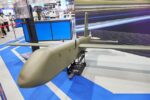Viking Life-Saving Equipment has entered into a strategic partnership with Johnson Controls to offer integrated marine fire protection services globally. The alliance aims to provide streamlined service packages for both commercial and military vessels by combining Viking’s global service network with Johnson Controls’ advanced fire detection and suppression technologies. This move reflects growing demand for lifecycle-integrated safety solutions amid increasing naval platform complexity.
Strategic Rationale Behind the Partnership
The collaboration between Viking Life-Saving Equipment A/S—a Danish firm specializing in maritime safety gear—and Johnson Controls’ Marine & Navy division brings together complementary capabilities in fire safety. Viking contributes its expansive global servicing infrastructure spanning over 280 ports worldwide, while Johnson Controls offers deep expertise in fixed firefighting systems such as water mist, foam-based suppression, CO₂ flooding systems, and advanced detection technologies tailored for naval applications.
This partnership is particularly significant as naval vessels increasingly require integrated damage control systems that meet stringent military specifications (MILSPEC) while remaining serviceable across diverse operational theaters. By offering combined packages under a single point of contact, the alliance aims to reduce logistical friction for ship operators managing complex onboard safety systems.
Scope of Services Offered
The joint offering includes:
- Inspection, maintenance, repair and overhaul (MRO) of fixed firefighting systems
- Compliance support with SOLAS regulations and military standards
- Lifecycle management services including retrofits and system upgrades
- 24/7 global support through Viking’s port-based service hubs
- Access to OEM-certified spare parts from both companies
This bundling strategy is designed to appeal not only to commercial shipping operators but also defense customers seeking end-to-end sustainment solutions for onboard fire protection. Notably, the offering supports both newbuilds and legacy fleet modernization programs—an area of growing interest among NATO navies facing aging platforms under constrained budgets.
Relevance to Naval Platforms and Defense Customers
Johnson Controls’ Marine & Navy division has long supplied custom-engineered fire protection solutions to various classes of surface combatants and auxiliary ships. Its portfolio includes high-pressure water mist systems suitable for confined engine rooms aboard frigates or corvettes; foam-based deck suppression systems on amphibious vessels; as well as gas-based clean agent solutions used in command centers or electronics compartments.
The partnership with Viking enhances the deployability of these technologies by ensuring that certified technicians can perform maintenance at key naval ports across Europe, Asia-Pacific, the Middle East, Africa, and North America. This is particularly relevant for expeditionary forces or blue-water navies that require rapid turnaround times during overseas deployments.
Moreover, the joint solution aligns with evolving NATO logistics doctrines emphasizing contractor-supported sustainment (CSS) models—where OEMs or integrators provide long-term support contracts rather than relying solely on uniformed personnel or government depots.
MILSPEC Compliance and CBRN Considerations
A critical aspect of modern naval firefighting infrastructure is its integration into broader shipboard survivability frameworks—including chemical-biological-radiological-nuclear (CBRN) defense protocols. Both Viking’s personal protective equipment (PPE) offerings—such as flame-retardant suits—and Johnson Controls’ compartmentalized suppression systems are engineered with these considerations in mind.
The companies have indicated that their joint services will be fully compliant with key standards such as:
- NATO STANAGs governing damage control system performance
- IMO SOLAS Chapter II-2 on fire protection requirements
- MIL-STD-167/461 for shock/vibration/electromagnetic compatibility where applicable
- CERTEX/NAVSEA certifications required by U.S. Navy programs
This ensures interoperability not just across allied fleets but also within multinational task forces where harmonized safety protocols are essential during joint operations or humanitarian assistance missions.
Industrial Implications and Market Outlook
This partnership reflects a broader trend in defense-related maritime services toward vertically integrated lifecycle support models. As navies pursue extended vessel life cycles—often exceeding 40 years—there is increasing demand for modular upgrade paths that incorporate new sensor suites or survivability enhancements without requiring full platform replacement.
The alliance may also position both companies favorably in upcoming procurement cycles involving offshore patrol vessels (OPVs), mine countermeasure ships (MCMVs), logistic support ships (LSS), or unmanned surface vehicles (USVs)—all of which require compact yet effective fire suppression capabilities due to limited crew sizes or autonomous operation constraints.
An additional industrial angle lies in digitalization: both firms are reportedly exploring condition-based monitoring (CBM) tools that could enable predictive maintenance of firefighting subsystems via IoT-enabled sensors—a capability increasingly valued by navies adopting digital twin architectures for fleet management.
Conclusion: Toward Safer Ships Through Integrated Support Models
The Viking–Johnson Controls partnership represents a pragmatic response to mounting complexity in maritime platform sustainment. By combining OEM-grade technology with global field service reach under unified management structures, the alliance offers a compelling value proposition not only for commercial shipowners but also defense ministries seeking resilient fleet readiness frameworks amid tightening budgets.
If successfully implemented at scale—particularly within NATO-aligned fleets—the model could serve as a blueprint for future collaborations between equipment manufacturers and service integrators across other critical shipboard domains such as HVAC/CBRN filtration or power distribution resilience.









